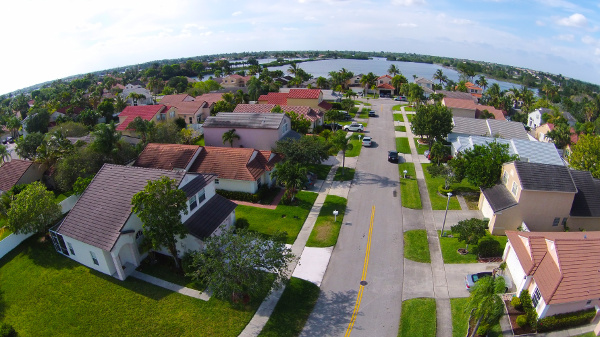What’s Ahead For Mortgage Rates This Week – October 17, 2022
 Last week’s economic reporting included readings on month-to-month and year-over-year inflation and the minutes of the most recent meeting of the Federal Reserve’s Federal Open Market Committee. The University of Michigan published its preliminary consumer sentiment reading and weekly reports on mortgage rates and jobless claims were also released.
Last week’s economic reporting included readings on month-to-month and year-over-year inflation and the minutes of the most recent meeting of the Federal Reserve’s Federal Open Market Committee. The University of Michigan published its preliminary consumer sentiment reading and weekly reports on mortgage rates and jobless claims were also released.
September Inflation Readings Provide No Relief
Inflation rose by a month-to-month pace of 0.40 percent in September as costs for staples including rent, food, and medical care increased. The Fed raised its target interest rate by 0.75 percent. Year-over-year inflation rose by 7.20 percent; this was the highest growth reading since 1982. The Federal Reserve considered a year-over-year rate of two percent inflation to be normal before the pandemic. September grocery prices were 13 percent higher year-over-year and reached their highest growth pace since 1979. Rents rose by 0.80 percent in September and the increase concerned economists who predicted no immediate end to high inflation. Rising rents are particularly significant as rent represents the largest component of most tenants’ budgets.
Core inflation, which excludes volatile food and fuel sectors, reached a 40-year high in September after increasing by 0.60 percent in August. Analysts expected a month-to-month increase of 0.40 percent based on August’s core inflation reading of 0.60 percent.
Year-over-year core inflation dipped to 8.20 percent in September. Analysts expected a reading of 8.10 percent; the year-over-year inflation reading for August 2022 was 8.30 percent. By comparison, the year-over-year core inflation readings for September 2021 were 6.60 percent with an expected reading of 6.50 percent and an August 2021 reading of 6.30 percent.
Mortgage Rates, Jobless Claims Rise
Freddie Mac reported higher average mortgage rates last week as the rate for 30-year fixed-rate mortgages rose by 26 basis points to 6.92 percent. Rates for 15-year fixed-rate mortgages averaged 6.09 percent and were 19 basis points higher. The average rate for 5/1 adjustable rate mortgages rose by 45 basis points to 5.81 percent. Discount points averaged 0.80 percent for 30-year fixed-rate mortgages and 1.10 percent for 15-year fixed-rate mortgages. Discount points for 5/1 adjustable rate mortgages averaged 0.80 percent.
Initial jobless claims rose to 228,000 first-time claims filed as compared to the previous week’s reading of 219,000 initial claim filings. The University of Michigan released its October consumer sentiment index with an index reading of 59.8; analysts expected a reading of 59.0 and September’s index reading was 58.6. Readings over 50 indicate that most index participants surveyed had a positive outlook on current economic conditions.
What’s Ahead
This week’s scheduled economic news includes readings on U.S. housing markets, building permits issued, and housing starts. Sales of previously-owned homes will be reported along with weekly readings on mortgage rates and jobless claims.

 Last week’s economic news included readings on home prices, pending home sales, and inflation. The University of Michigan released its monthly reading on consumer sentiment and weekly readings on mortgage rates and jobless claims were also published.
Last week’s economic news included readings on home prices, pending home sales, and inflation. The University of Michigan released its monthly reading on consumer sentiment and weekly readings on mortgage rates and jobless claims were also published. The S&P Case-Shiller Home Price Indices for July showed a sharp slowing in home price growth from June to July. National home price growth slowed from June’s reading of 18.7 percent year-over-year growth to 16.10 percent home price growth in July. This reading translated to an 0.20 percent loss in month-to-month home price growth.
The S&P Case-Shiller Home Price Indices for July showed a sharp slowing in home price growth from June to July. National home price growth slowed from June’s reading of 18.7 percent year-over-year growth to 16.10 percent home price growth in July. This reading translated to an 0.20 percent loss in month-to-month home price growth.